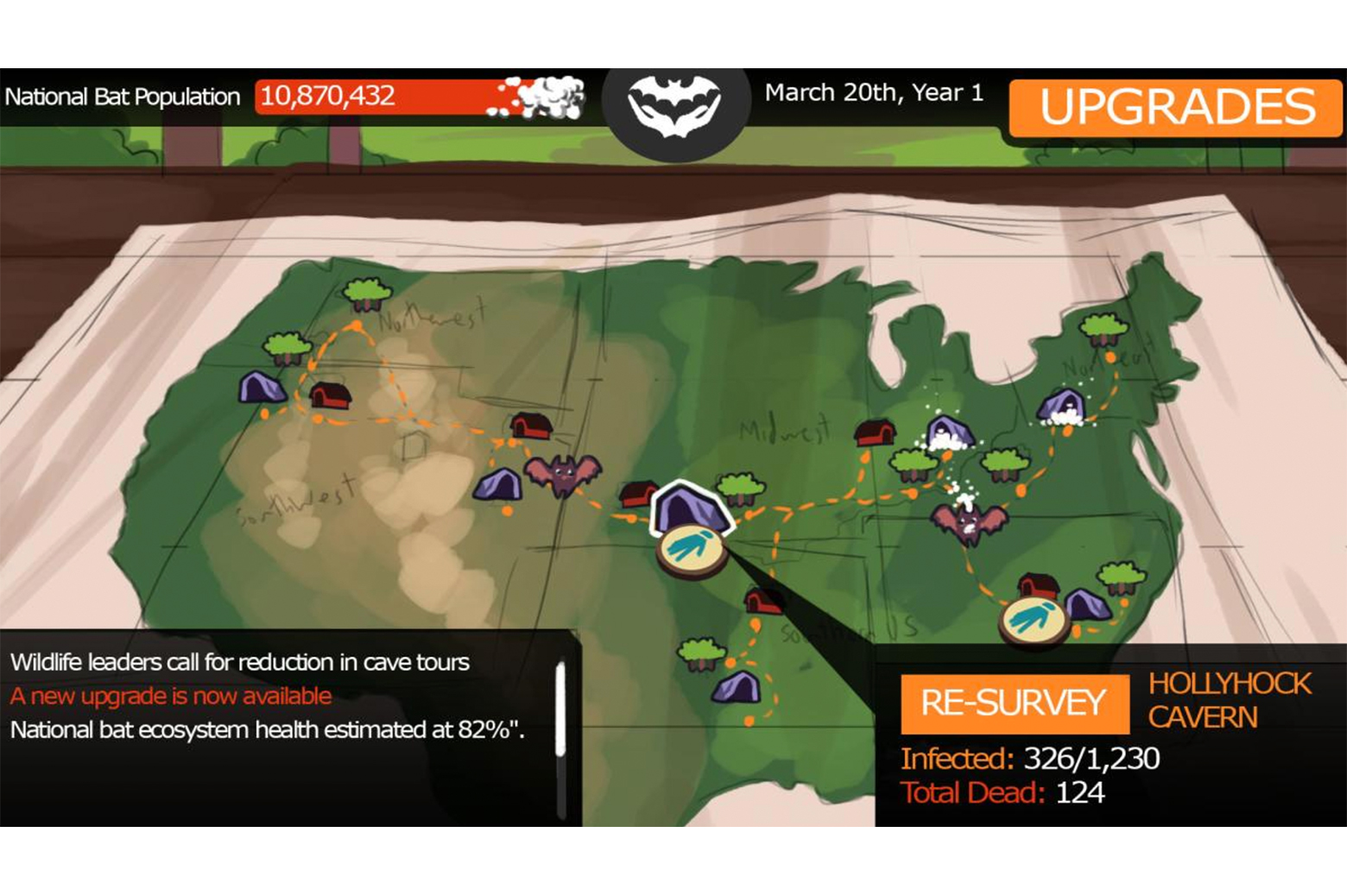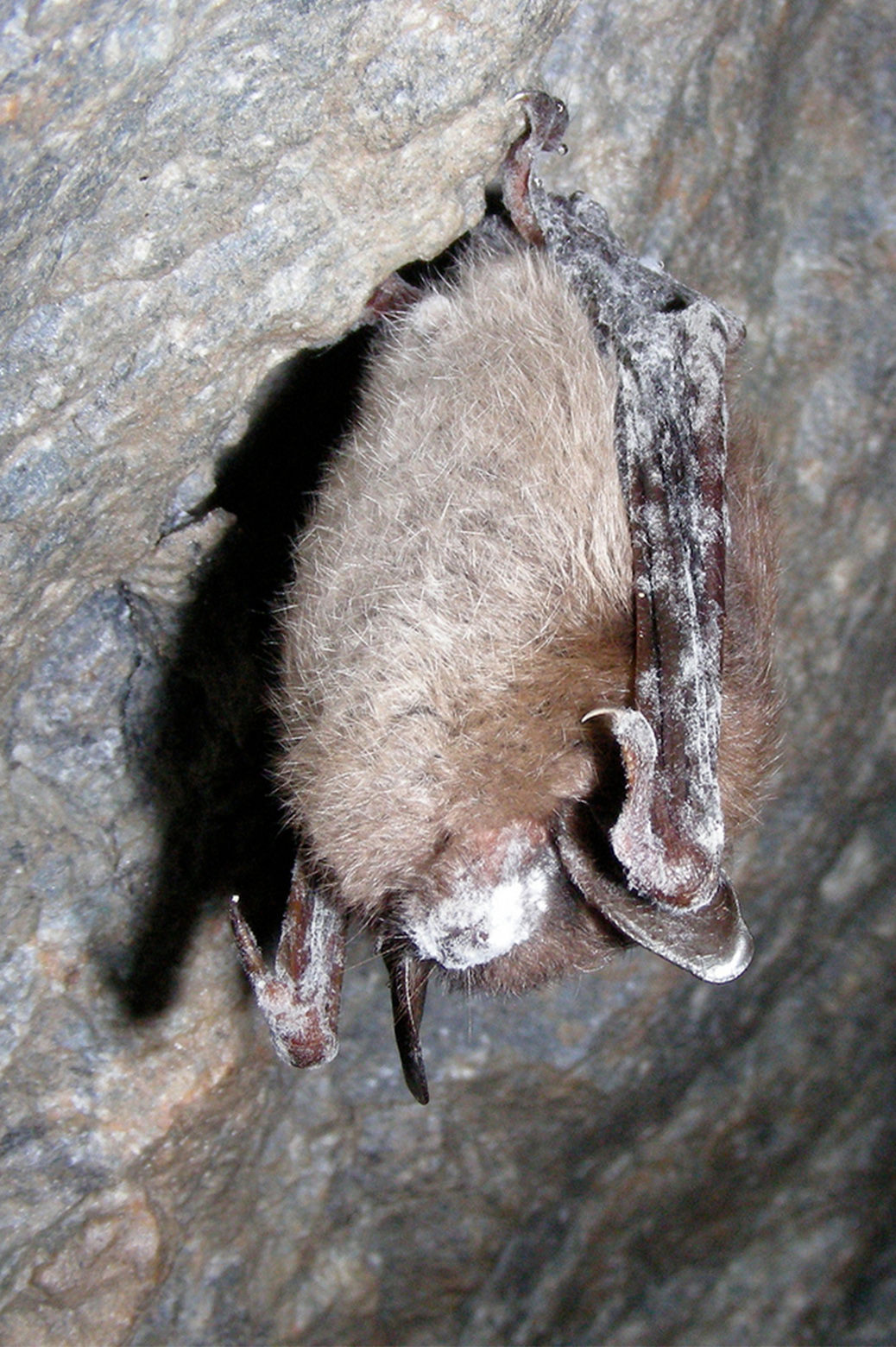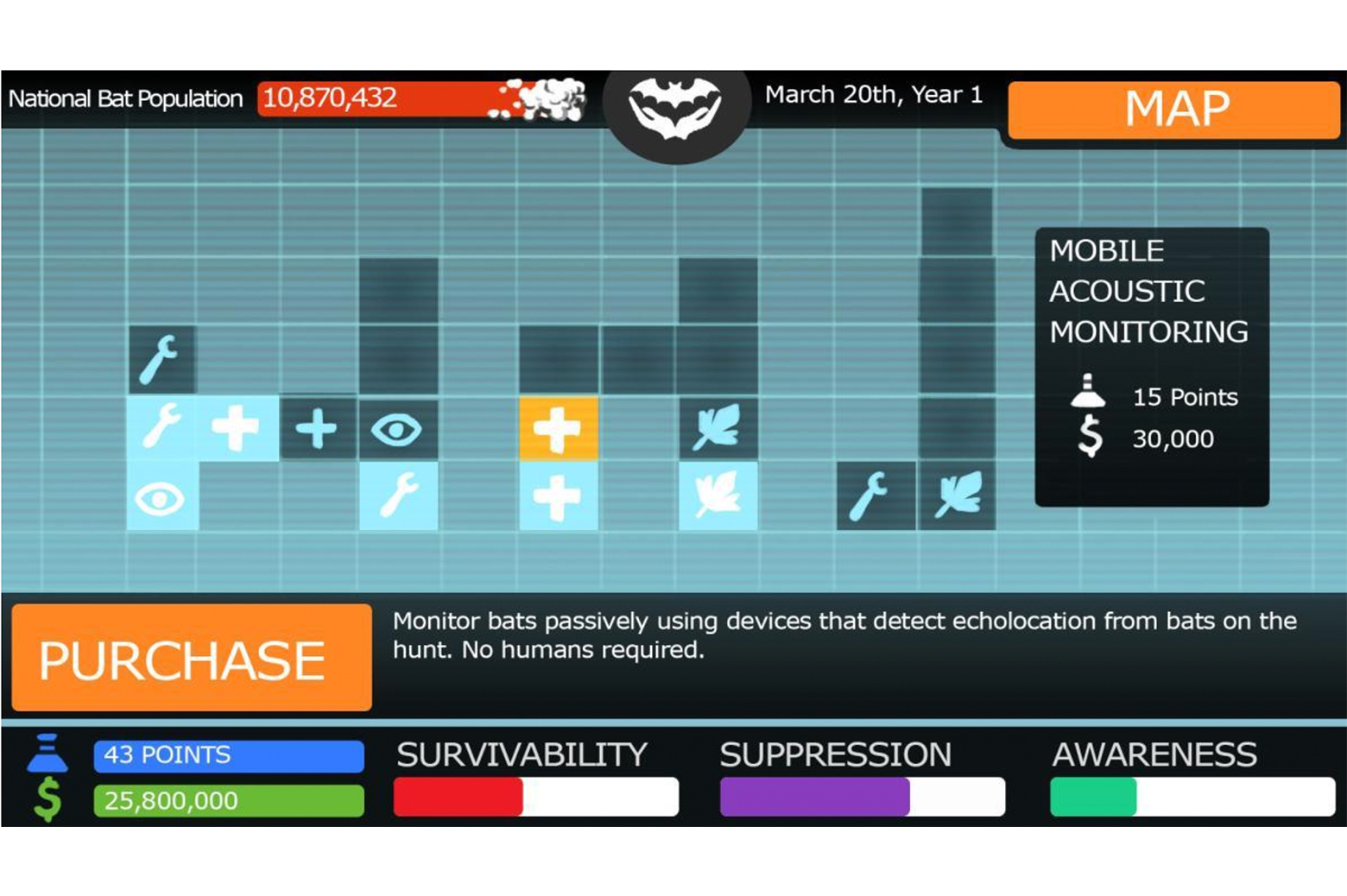New browser strategy game has players tackle real-life bat catastrophe
As a fungal infection ravages bat populations, the new game hopes to promote public awareness of ongoing research to combat the issue.

 Enlarge
Enlarge
Bat populations across North America could be in trouble, and a video game can help tell you why. A spreading fungal infection, called white nose syndrome, has ecologists concerned and scrambling for a solution, but it’s turning out just as difficult to alert the public to the problem.
Austin Yarger, lecturer in CSE, is working on a grant from the US Fish and Wildlife Service to spread the word with a public service video game that simulates the predicament. The strategy simulation, which will enter beta testing in the fall of 2019, takes inspiration from the popular Plague Inc. and has players manage research resources and monitor bat migration to mitigate infection and prevent as many bat deaths as they can.
White nose syndrome is a disease that has ravaged bat populations in North America for a number of years. When infected, a small white fungus grows on the bat’s nose and, almost innocuously, annoys it. The problem arises when the bats go to hibernate – that little annoyance wakes them up, and every time they wake up during hibernation they burn a lot of fat. This fat becomes a matter of life and death in cold winter months.

 Enlarge
Enlarge
The Service launched a grant program to find novel ways of getting the word out about the issue, hoping to make sure people are not being too careless in caves, not messing with bats, and not tracking the fungus from cave to cave. Yarger’s project seeks to do so by putting players in the shoes of the researchers.
In Plague, Inc., players design a disease and attempt to infect as much of a simulated planet Earth as they can. In Yarger’s web browser-based game, players will attempt to do quite the opposite. As they track the development and spread of the fungus between bats and caves, they’ll be able to upgrade their containment capabilities, public awareness, and research knowledge of the fungus. With good strategy, they can mitigate the spread and keep the infected population low.
Among the game’s novel design features, Yarger has made the parameters of the game readily editable by the research staff through a shared Google Sheet. The game feeds in data from the sheet dictating key game mechanics, like how easy it is for the fungus to spread and how fast the bats can fly, allowing the researchers to tweak gameplay and add new functions as their research evolves.

 Enlarge
Enlarge
“The leaders of this project are not necessarily programmers who can figure out how the game engine works,” Yarger explains, “but with this spreadsheet, all they have to do is tweak a few numbers to change their video game as the research progresses.”
For example, researchers are examining the efficacy of using ultraviolet lights near cave entrances to kill fungus aboard any entering bats. It’s unclear whether this method will work on a large scale without affecting other important fungi in the biome – but in the event it shows promise, the team can easily add it as a feature to the game.
With this flexibility, the game can launch even before a full picture of the disease and its mitigation is understood. “We don’t want to mislead out audience,” Yarger says. “We don’t want to assume something will work before it does.”
“The interesting thing is we’re designing a game around a problem that hasn’t been solved yet,” says Yarger. Faced with this limitation, deciding on a way to “win” turned out to be the most tricky. In the end, the goal is public awareness of the severity of the issue – so winning may not be an option for the time being.
Yarger hopes that this capacity for evolving gameplay can hook audiences and encourage them to follow developments around the issue.
“It’s sad that for whatever reason public games have a reputation for being somewhat cheap. If you look back through history, there have been some really good publically-funded games,” he says, citing Oregon Trail as one personal inspiration. “So hopefully we can spice that up a bit.”
Development of the simulator is primarily done through Arbor Interactive, Yarger’s educational games startup in downtown Ann Arbor.
For more information on white nose syndrome and what you can do to help keep bats safe, visit the response team’s website.
 MENU
MENU 
